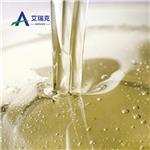- angelica oil
-

- $0.00 / 1Kg
-
2024-12-24
- CAS:8015-64-3
- Min. Order: 1Kg
- Purity: 99.9%
- Supply Ability: 200tons
- Angelica Root Oil
-

- $15.00 / 1KG
-
2021-07-02
- CAS:8015-64-3
- Min. Order: 1KG
- Purity: 99%+ HPLC
- Supply Ability: Monthly supply of 1 ton
- Angelica oil
-

- $2.00 / 1kg
-
2019-07-06
- CAS:8015-64-3
- Min. Order: 1kg
- Purity: 99%
- Supply Ability: ask
|
| | Angelica oil Basic information |
| | Angelica oil Chemical Properties |
| | Angelica oil Usage And Synthesis |
| Chemical Properties | The essential root oil is obtained by steam distillation of the roots. The pale-yellow to deep-amber liquid has a warm,
pungent odor with musky or earthy notes and has a bittersweet flavor. The yield from the roots is fairly low even though they may
be steam distilled for up to 24 hours; these factors, coupled with the qualitative differences in old versus young roots and the laborintensive process in digging and cleaning the roots, make the root oil fairly expensive. | | Chemical Properties | Angelica seed oil is obtained by steam distillation of the fresh seed of Angelica archangelica L. It has a sweeter and
more delicate aroma than the root oil. The essential seed oil has a bitter, aromatic flavor. The essential seed oil is obtained in 0.6 to
1.5% yields by steam distillation of seeds harvested in mid-July (in Germany) | | Chemical Properties | Essential oil; strong aromatic odor; spicy taste. Soluble in alcohol. Chief known constituents: phellandrene, valeric acid. Combustible. | | Physical properties | It is a pale-yellow to deep-amber liquid having a warm, pungent odor and bittersweet taste.
Soluble in most fixed oils, slightly soluble in mineral oil, but relatively insoluble in glycerin and in propylene glycol | | Physical properties | It is a light yellow liquid. Soluble in most fixed oils, slightly soluble in mineral oil, but relatively
insoluble in glycerin and propylene glycol. | | Occurrence | Found in the roots of the plant Archangelica officinalis Hoffm.(Angelica archangelica
L.) (Fam. Umbelliferae). | | Uses | Preparation of liqueurs, perfumery. | | Preparation | Angelica oil is prepared from Angelica roots or seeds.
Angelica root oil contains about 90% terpenoids and sesquiterpenoids.α-Pinene,
3-carene, limonene, and β-phellandrene are the major components (together
about 60%). In addition, the oil contains a large number of oxygen-containing
compounds, of which the macrolides 15-pentadecanolide and 13-tridecanolide
are essential odor components. Angelica oils are produced in very
small quantities, for example, in Europe (France, Hungary) and India. They are
used mainly in the alcoholic beverage industry and, in very low dosages, also in
fine fragrances. | | Definition | Extractives and their physically modified derivatives. Angelica archangelica, Umbelliferae. | | Essential oil composition | Terpenic hydrocarbons (α-pinene 4.4 to 24%, α-phellandrene 7.5–20%, β-phellandrene 16 to 24%,
β-pinne 0.2 to 0.5%); macrocyclic lactone 0.8 to 2.4% (CoE, 2000). TNO (2000) reported 87 compounds from the angelica root oil.
Of these, 43 were hydrocarbons, 22 alcohols and the remaining were esters, carbonyl aldehydes, carbonyl ketones, lactones, phenols,
furans and oxides or epoxides of pyrans and coumarins. | | Essential oil composition | The seed oil qualitatively contains α-pinene, camphene, β-pinene, myrcene, β-phellandrene, ocimene
(no isomer given), limonene, γ-terpinene, caryophyllene, p-cymene, 1,8-cineole, borneol, carvone. The seed oil contains 0.5% imperratorin,
0.1% bergapten, 0.02% xanthotoxol, 0.04% umbelliprenin, osthole, osthenole and angelicin (CoE, 2000). | | Safety Profile | When heated to
decomposition it emits acrid smoke and
irritating fumes. |
| | Angelica oil Preparation Products And Raw materials |
|